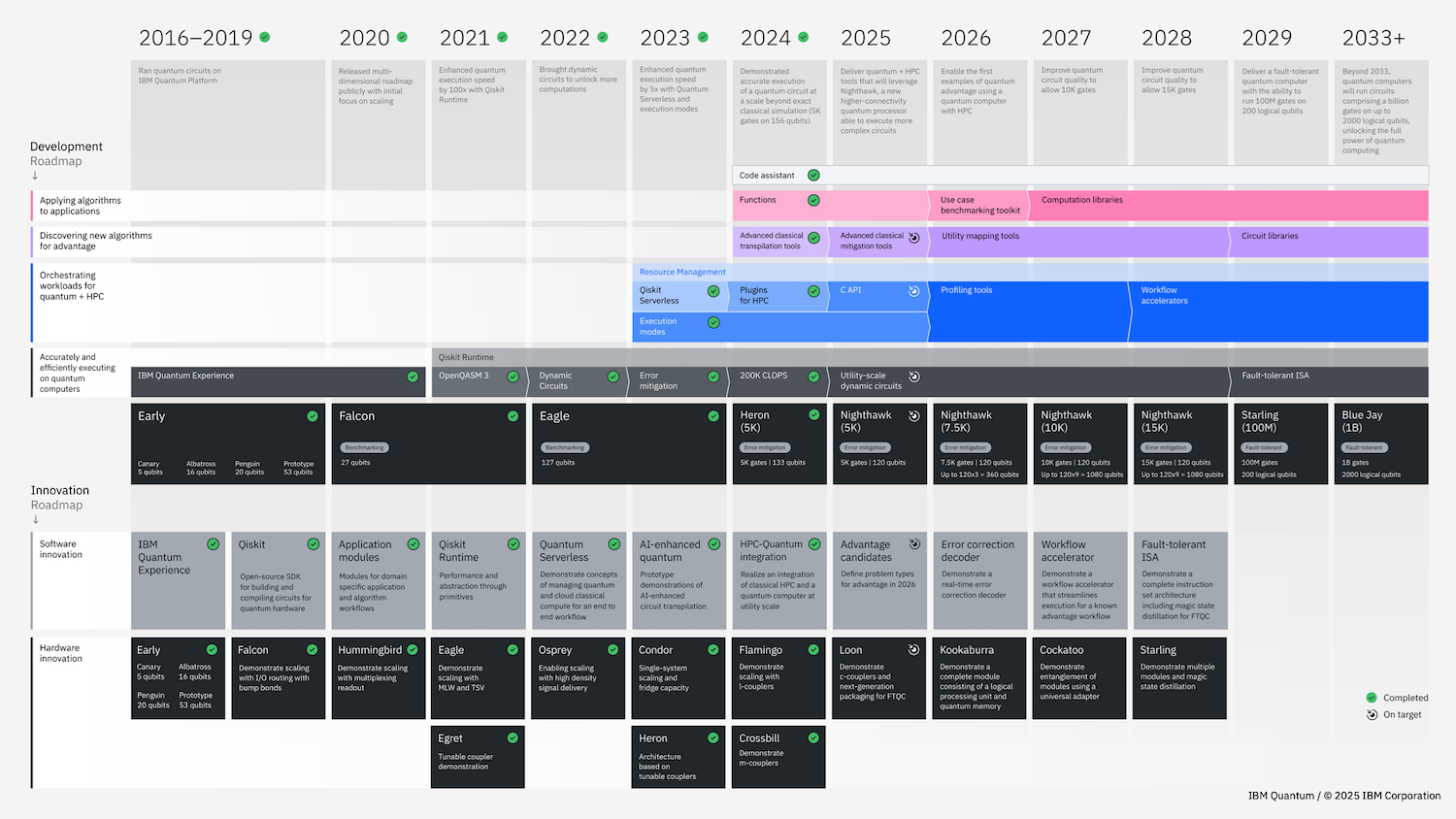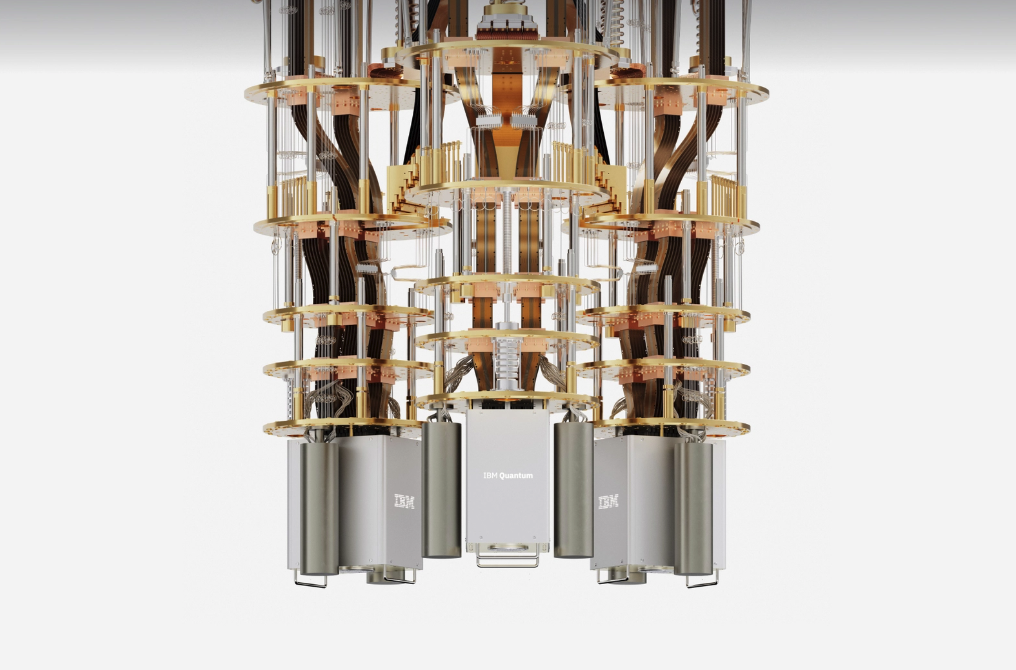IBM unveils Starling, a fault-tolerant quantum computer, with a roadmap to 2,000 logical qubits and 1B operations by 2033.
IBM has announced a bold vision to deliver the world’s first large-scale, fault-tolerant quantum computer, marking a pivotal step toward practical and scalable quantum computing. The company’s latest roadmap, unveiled alongside this announcement, details a clear path to overcoming the technical barriers that have long limited quantum systems to experimental and small-scale applications.

IBM Quantum Starling: A Leap in Computational Power
Central to IBM’s strategy is the IBM Quantum Starling, a system anticipated for delivery in 2029. This quantum computer will be housed in a new IBM Quantum Data Center in Poughkeepsie, NY, and is projected to execute 20,000 times more operations than today’s quantum computers. The computational state of Starling is so vast that representing it would require more memory than a quindecillion (10^48) of the world’s most powerful supercomputers combined. With this leap, users will be able to explore quantum states and computational complexity far beyond the reach of current quantum systems.
IBM’s global fleet of quantum computers already leads the industry. Still, the new roadmap sets the stage for a practical, fault-tolerant quantum computer capable of addressing real-world business and scientific challenges. Arvind Krishna, IBM’s Chairman and CEO, emphasized that the company’s progress is rooted in its deep expertise in mathematics, physics, and engineering, all directed toward building a quantum computer that can solve meaningful problems and unlock new business opportunities.
The Promise of Fault-Tolerant Quantum Computing
A large-scale, fault-tolerant quantum computer, one with hundreds or thousands of logical qubits, could perform hundreds of millions to billions of operations. This capability has the potential to transform industries by dramatically improving time and cost efficiencies in fields such as drug discovery, materials science, chemistry, and complex optimization.

IBM Quantum Starling will be the first to run 100 million quantum operations using 200 logical qubits, laying the foundation for the next-generation IBM Quantum Blue Jay, which will scale to 1 billion operations across 2,000 logical qubits. Logical qubits, the building blocks of error-corrected quantum computers, are constructed from clusters of physical qubits that work together to store quantum information and monitor for errors. This architecture is essential for suppressing errors and enabling large-scale, reliable quantum computation.

IBM Quantum System Two
Error correction is as critical to quantum computing as it is to classical systems. By grouping physical qubits into logical qubits, IBM can exponentially reduce error rates, allowing for more complex and longer-running quantum circuits. The challenge lies in increasing the number of logical qubits while minimizing the physical resources required—a hurdle that, until now, has lacked a practical solution without excessive engineering overhead.
Engineering a Scalable, Fault-Tolerant Architecture
The path to large-scale, fault-tolerant quantum computing hinges on the choice of error-correcting code and the system’s ability to scale that code efficiently. Traditional error-correcting codes, while effective in theory, require an impractically large number of physical qubits and supporting infrastructure, making them unsuitable for anything beyond small-scale demonstrations.
Several key architectural requirements define IBM’s approach, including:
- The system must be fault-tolerant enough to suppress errors for practical algorithms.
- It must support the preparation, measurement, and manipulation of logical qubits throughout computation.
- Universal instructions must apply to logical qubits, with real-time decoding and adaptive control.
- The architecture must be modular to scale to hundreds or thousands of logical qubits, and efficient enough to operate within realistic physical and energy constraints.
To address these challenges, IBM has introduced two technical papers detailing its solutions. The first paper describes how quantum low-density parity check (qLDPC) codes can process instructions and execute operations with dramatically reduced overhead, cutting the number of required physical qubits by approximately 90% compared to previous methods. This breakthrough, featured on the cover of Nature, demonstrates the efficiency and scalability of the qLDPC approach.
The second paper presents a method for efficiently decoding information from physical qubits and correcting errors in real time using conventional computing resources. Together, these advances form the backbone of IBM’s scalable, fault-tolerant quantum architecture.
Roadmap to Realization: Key Milestones
IBM’s updated Quantum Roadmap outlines a series of technology milestones, each designed to address specific challenges in building modular, scalable, and error-corrected quantum computers:
- IBM Quantum Loon (2025): This processor will test architectural components for the qLDPC code, including “C-couplers” that enable long-distance connections between qubits on the same chip.
- IBM Quantum Kookaburra (2026): As IBM’s first modular processor, Kookaburra will integrate quantum memory with logic operations, forming the essential building block for scaling fault-tolerant systems beyond a single chip.
- IBM Quantum Cockatoo (2027): This system will entangle two Kookaburra modules using “L-couplers,” connecting quantum chips as nodes in a larger system and eliminating the need for impractically large chips.

IBM’s vision for quantum computing is ambitious and technically sound. By focusing on error correction, scalability, and efficiency, IBM aims to lead in the quantum era. Its roadmap and breakthroughs signal a new chapter in solving problems that classical computers cannot address.
Engage with StorageReview
Newsletter | YouTube | Podcast iTunes/Spotify | Instagram | Twitter | TikTok | RSS Feed

